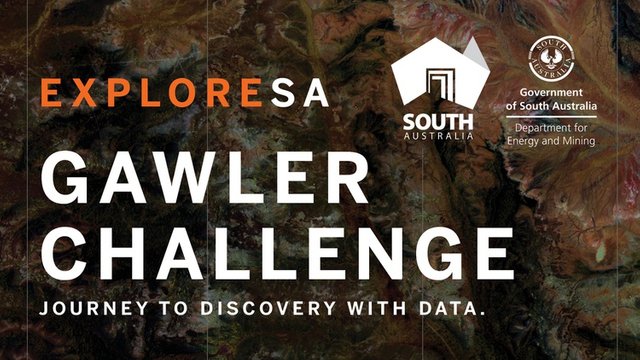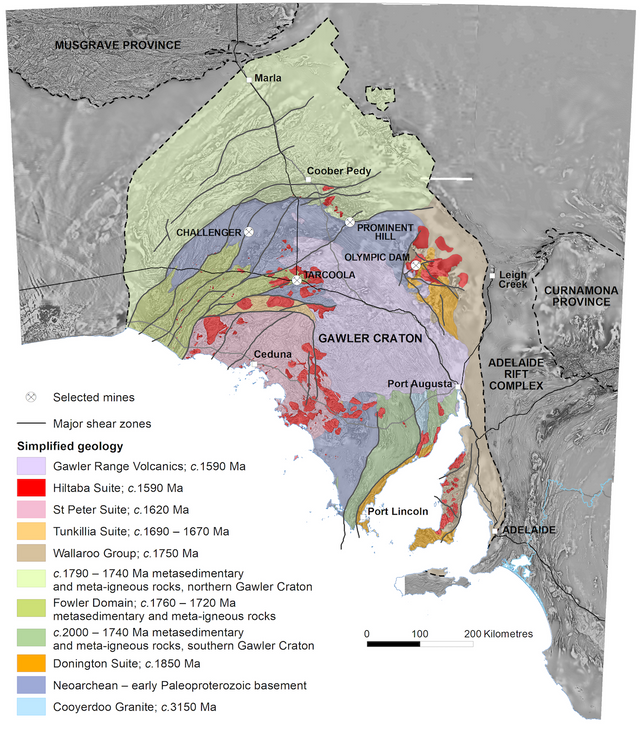The Gawler Geology Challenge

Join an epic global challenge to test the limits of geology and data science and develop new ideas about mineral exploration.
ExploreSA: The Gawler Challenge is a global online competition from the Government of South Australia. The challenge is to identify or predict areas of potential mineralisation within the Gawler region, using any technique.
South Australia is an incredibly rich region for minerals, hosting some of the best deposits in the world. On top of that, new discoveries have recently been made by re-processing old data, such as BHP's Oak Dam West. All of this makes us really confident you'll be able to find more through this challenge!
The challenge is open to everyone, but best suited to geologists, data scientists, mathematicians and keen explorers! We encourage you to get involved if you're interested in learning about mineral exploration, want to give something a go and get feedback, get recognition for your work and team, or simply to win one of the epic cash prizes! This is a real way for you to make a fundamental difference to mineral exploration in South Australia, and demonstrate your work on a global stage.
Challenge Background
Finding a mineral deposit is a task that is becoming more and more challenging. Most deposits sticking out of the ground have been found, and finding new deposits takes an analysis of many layers of data by teams with different skill sets. This is why we're looking for new ways of looking at this data, to address this epic challenge!
Some of the reasons that exploring is hard include that:
The combination of factors that result in large-scale deposits being extremely rare, requiring certain geological processes to take place in the right place and the right order over extended periods of time.
Deposits left undiscovered are often under thick cover sequences (ie. deep underground), which makes collecting information about them difficult.
It’s usually hard to distinguish ore-grade deposits from unmineralised rock as there are few ways of directly detecting a mineral deposit.
There are geophysical survey techniques (e.g. seismology, or measurements of electromagnetic, magnetic and gravity fields), which can be inverted to determine rock properties below the surface, which can be useful in finding some types of deposit.
However, there is no similar invertible model that combines these physical properties with geochemistry/petrology, rock rheology, fluid flow and structural deformation to definitively tell us whether ore-forming processes have been occurring in a particular chunk of the earth.
All of these complications mean explorers work with a great deal of uncertainty and complexity. But we have a lot in our favour as well!
Digitisation of databases and increased computing power is allowing for new analytical techniques to be used in our quest.
The Department of Energy and Mining in South Australia maintains geoscience databases for the public and government.
This data is a crucial foundation to applying new techniques, which we encourage you to use in this challenge.
Some world class discoveries have been made in the Gawler in recent times, so we're confident there's more out there!
What can we find in the Gawler?
The region is well known for its copper (Cu) and gold (Au) deposits, but there are many more potential deposits types, and we encourage you to challenge existing exploration approaches to look for different metals and minerals. The map below shows some of the major deposits in the Gawler including Olympic Dam and Prominent Hill, both of which are IOCG (iron-oxide-copper-gold) deposits. You can check out a detailed description of all the potential mineralisation types here.

Why should we care?
Mining, minerals, and metals are important to the economies of many countries and the resulting products are essential for modern living.
Did you know that every time you switch on a light, use an appliance in your home, or turn on a tap, it is copper that is delivering the electricity or water to you? Because copper is a highly efficient conductor, it is used in renewable energy systems to generate power from solar, hydro, thermal and wind energy. Copper plays a critical role in making renewable energy systems as efficient as possible with minimal impact on the environment.
The Gawler is also prospective for other metals that we use in modern technologies, like rare earth elements and lithium.
Challenge
The challenge is to identify or predict mineralisation locations in the Gawler - using any approach.
Predicted mineralisation may be of any element and may take the form of areas of interest (prospectivity), or specific targets.
You are welcome to process, analyse, model, or otherwise work with the data in any way you wish.
We encourage the formation of multi-disciplinary teams, and application of knowledge and techniques from a variety of domains, where appropriate.
In addition to this main challenge, we have re-opened the Explorer Data Science stream to help you get up and running by building models on simple Australia wide datasets, which we're confident will help you predict locations in the Gawler as well!
Awards:- $250K Prize Pool
Deadline:- 01-08-2020
Posted from my blog with SteemPress : https://givemechallenge.com/the-gawler-geology-challenge/
Warning! This user is on our black list, likely as a known plagiarist, spammer or ID thief. Please be cautious with this post!
If you believe this is an error, please chat with us in the #appeals channel in our discord.
Congratulations @saadithya! You have completed the following achievement on the Steem blockchain and have been rewarded with new badge(s) :
You can view your badges on your Steem Board and compare to others on the Steem Ranking
If you no longer want to receive notifications, reply to this comment with the word
STOPTo support your work, I also upvoted your post!
Do not miss the last post from @steemitboard:
Vote for @Steemitboard as a witness to get one more award and increased upvotes!